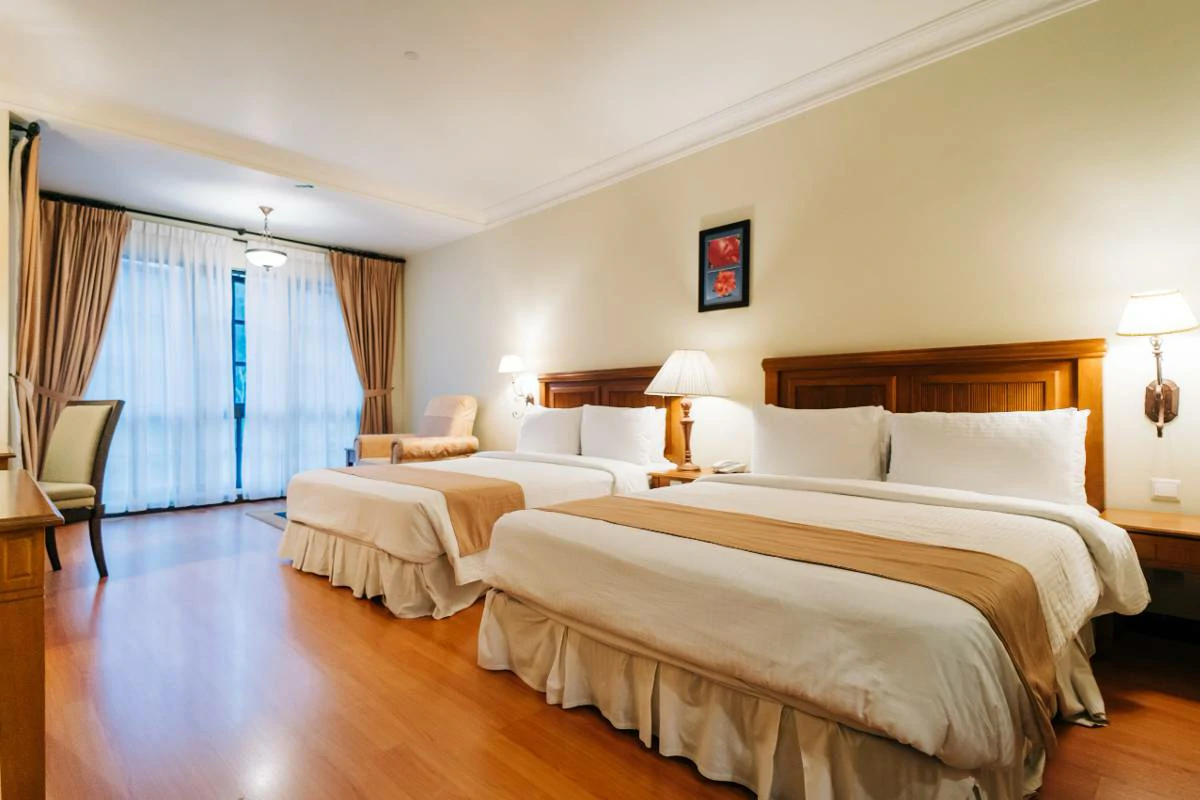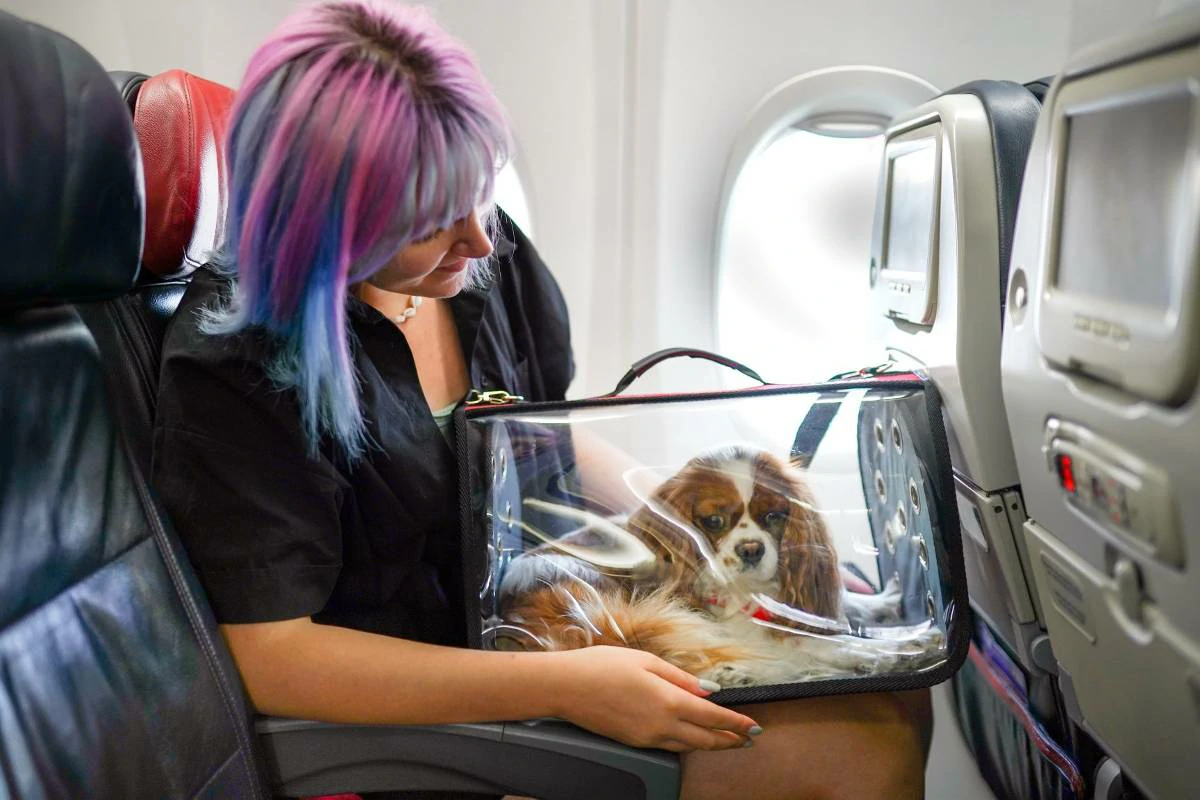What Are Different Bed Sizes In Hotels? Answer is – Hotels offer several bed sizes to suit different needs and preferences. The most common ones include:
- Twin or Single: The smallest standard hotel bed, ideal for one person.
- Double or Full: Accommodates two people, but can be tight for some couples.
- Queen: A popular choice for couples, offering more space than a double.
- King: The most spacious standard option, great for couples who want extra room.
- California King: Slightly longer than a standard king, ideal for taller individuals.
Some hotels might also have less common options like twin XL, or even suites with multiple bed configurations.
Summary
- Hotel bed sizes range from small singles to spacious California kings.
- The most common bed sizes are twin, double, queen, and king.
- Choosing the right bed size depends on the number of guests and space preferences.
- Some hotels offer additional options or custom room configurations.
What Are Different Bed Sizes In Hotels?

Choosing the right hotel room goes beyond amenities and location – bed size plays a crucial role in ensuring a comfortable and restful night’s sleep.
A bed that’s too small can lead to cramped quarters and disrupted sleep patterns, while an unnecessarily large bed might take up valuable space in your room.
Let’s explore why bed size is a significant factor in your hotel experience and what elements influence your decision.
Why bed size matters in hotels
Comfort: The primary reason bed size matters is comfort. A spacious bed allows you to stretch out, change positions freely, and sleep soundly without feeling confined. This is especially important for those who tend to move around during sleep or for couples who value their personal space.
Sleep quality: A well-suited bed size directly impacts sleep quality. Tossing and turning due to a lack of space can result in fragmented sleep and leave you feeling groggy and unrested in the morning. A comfortable bed promotes deeper, more restorative sleep.
Overall guest experience: Bed size contributes to your overall satisfaction with your hotel stay. A good night’s rest sets the tone for a positive day of travel or business. Conversely, a night spent on an uncomfortable bed can negatively color your perception of the entire hotel experience.
Factors affecting bed size choice
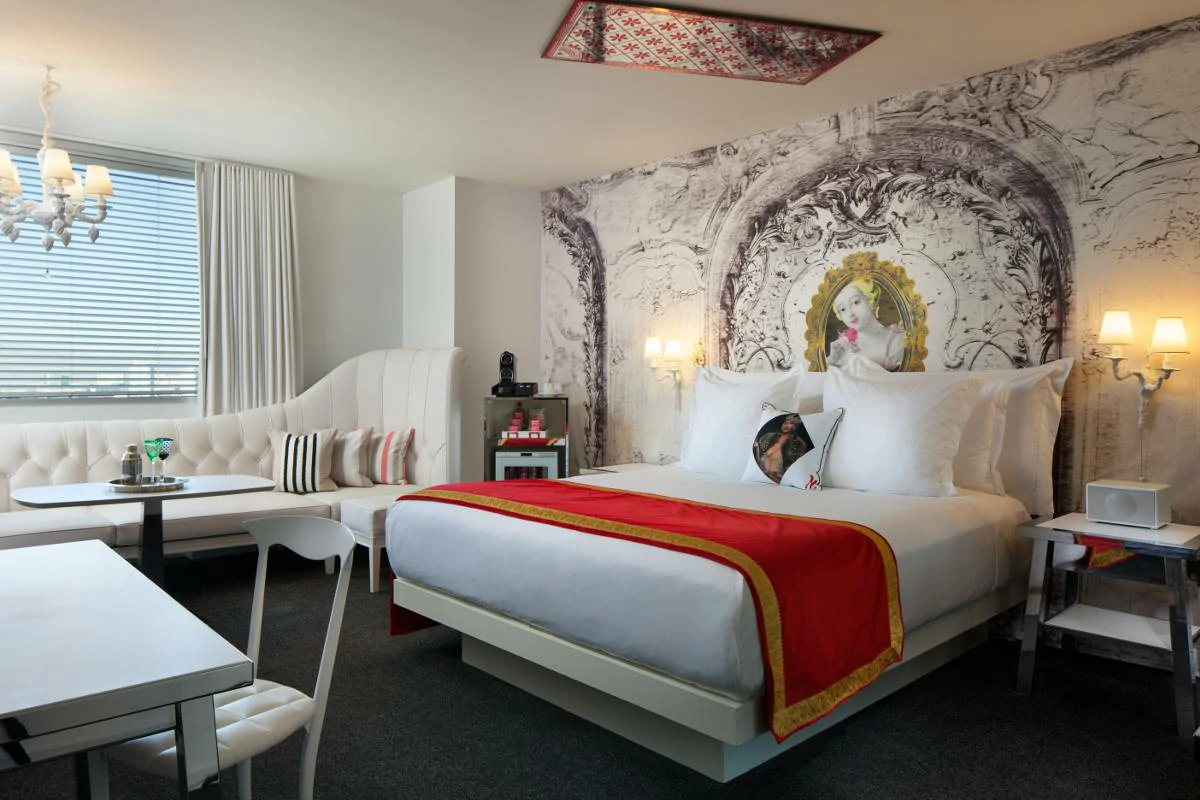
Number of guests: Naturally, the number of people sharing the room is the primary consideration. A solo traveler might be perfectly content with a twin bed, while a couple will likely require a queen or king-size bed. Families need to factor in the number and ages of children when determining the ideal bed configuration.
Personal preferences: Preferences for sleeping space vary from person to person. Some individuals feel more secure in a smaller bed, while others need ample room to spread out for optimal comfort. Couples need to find a middle ground that suits both partners’ needs.
Room Size: It’s important to consider the hotel room size when selecting your bed. A huge bed in a small room can make the space feel cramped and difficult to navigate. Opt for a bed size that leaves enough room to comfortably move around and access other areas of the room.
Physical Limitations: Guests with limited mobility or health conditions might require specific bed sizes or configurations. Some hotels offer rooms with wider doorways or accessible beds for those with special needs. Contact the hotel in advance to discuss your requirements.
Sarah Anderson Expert Opinion
Sarah Anderson, a travel blogger and hospitality consultant, emphasizes the importance of prioritizing sleep comfort when choosing hotels: “Don’t underestimate the power of a good night’s sleep on your overall travel experience. Invest in a hotel room with a bed size that allows you to wake up feeling refreshed and ready to tackle the day.”
What Are Different Bed Sizes in Hotels?
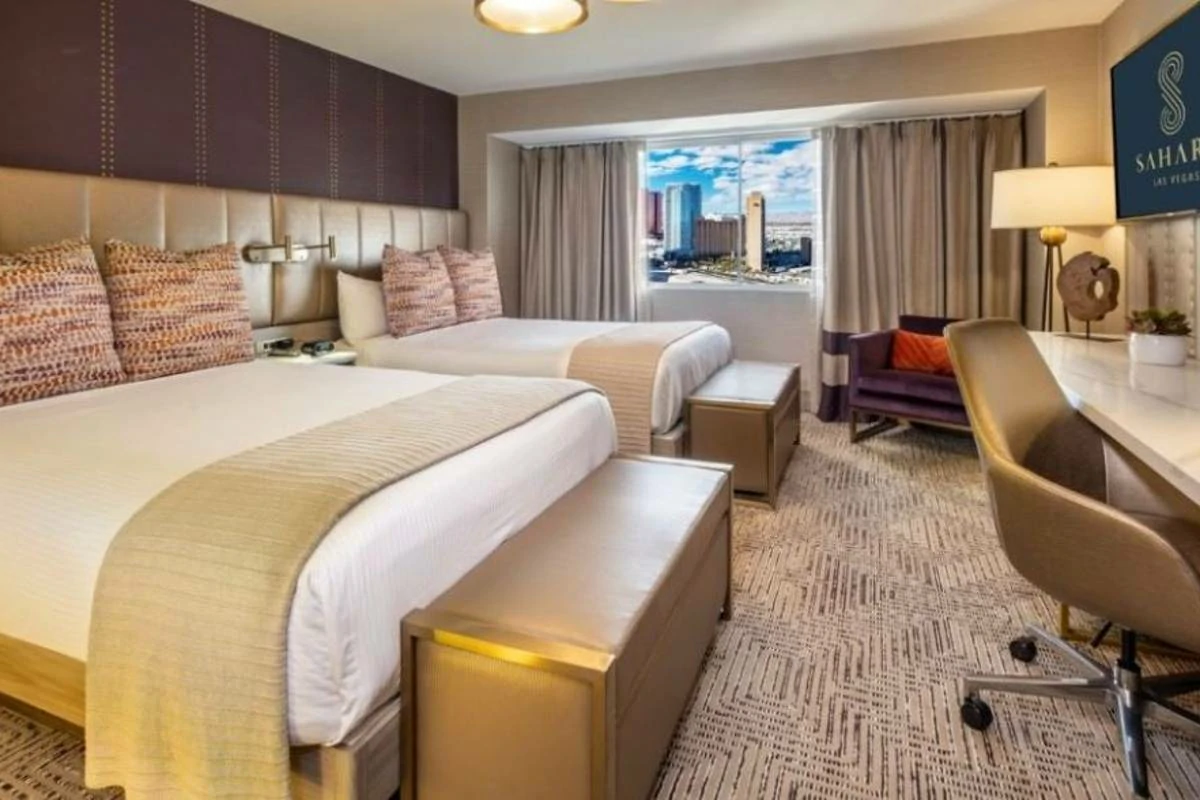
Understanding the different bed sizes found in hotels is essential for selecting a room that guarantees a good night’s sleep. Here’s a breakdown of the standard options you’re likely to encounter:
1. Twin/Single Beds
Dimensions: Twin beds typically measure 36 inches (91 cm) wide by 75 inches (190 cm) long. Some hotels may offer Twin XL beds, which have the same width but are slightly longer at 80 inches (203 cm).
Best suited for:
- Solo travelers: Twin beds are ideal for individual travelers looking for a budget-friendly and space-saving option.
- Children: These beds are a suitable choice for younger children.
- Rooms with limited space: When space is a concern, twin beds can maximize floor area in smaller hotel rooms.
Pro Tip: Kathryn Brown, Travel Editor, recommends: “If you’re a tall person traveling alone, ask the hotel about availability of Twin XL beds for added legroom and comfort”
2. Double/Full Beds
Dimensions: Double or full beds have standard dimensions of 54 inches (137cm) wide by 75 inches (190 cm) long.
Best suited for:
- Couples on a budget: Double beds can be a more affordable option for couples who are willing to compromise on space.
- Single sleepers seeking extra room: If you enjoy having a bit more space to spread out, a double bed can be a comfortable upgrade from a twin.
- Rooms with moderate space: Double beds work well in rooms where a larger bed might overwhelm the space.
Jessica Williams Expert Opinion
Hotel manager Jessica Williams advises, “If you’re unsure whether a double bed will be comfortable for two people, consider the size and sleeping habits of both individuals. If you tend to move around a lot or value ample personal space, upgrading to a queen size might be worthwhile.”
3. Queen Beds
Dimensions: Queen beds offer a generous 60 inches (152 cm) of width and 80 inches (203 cm) of length.
Best suited for:
- Couples: Queen beds are the most popular choice for couples due to their balance of comfort and affordability. They offer more space than a double bed, allowing partners to relax without feeling overly cramped.
- Solo travelers seeking extra space: If you like to spread out and enjoy a luxurious sleeping experience, a queen-size bed can be a fantastic upgrade for a solo traveler.
Brian Smith Expert Opinion
Brian Smith, a sleep specialist, notes: “Queen beds are a great middle ground for couples. They provide enough space for individual comfort while still promoting a sense of closeness.”
4. King Beds
Dimensions: King beds are the reigning champions of spaciousness, measuring a luxurious 76 inches (193 cm) wide and 80 inches (203cm) long.
Best suited for:
- Couples wanting maximum space: King beds offer ample room for couples to stretch out and sleep comfortably without disturbing each other.
- Families with small children: King beds can sometimes accommodate parents and a young child, providing a cozy family sleeping arrangement.
- Travelers seeking luxury: If you prioritize a lavish sleeping experience and have the budget, a king-sized bed can elevate your hotel stay.
Expert Tip: Interior designer Sarah Thompson suggests, “Before booking a king room, check the dimensions of the hotel room itself. A massive bed can overwhelm a smaller space, making it feel cramped and less inviting.”
5. California King Beds
Dimensions: California king beds measure 72 inches (183 cm) wide and 84 inches (213 cm) long. They offer slightly less width than a standard king but provide additional legroom.
Best suited for:
- Taller individuals: The extra length of a California king is a major advantage for those who need the space to stretch out fully.
- Couples who value legroom: If you or your partner are tall, a California king offers a fantastic balance of width and length for optimal comfort.
- Rooms with a narrower layout: In some hotel rooms, a California king’s slightly slimmer profile might fit the space better than a standard king.
6. Other Less Common Bed Sizes
While the previously discussed bed sizes are the most widespread, you might occasionally encounter these variations:
Twin XL: A twin XL offers the same width as a standard twin (36 inches/91 cm) but boasts an additional 5 inches (12 cm) of length, totaling 80 inches (203 cm). This makes it a great choice for taller solo travelers.
Olympic Queen: Slightly wider than a standard queen at 66 inches (168 cm) and the same length (80 inches/203cm), Olympic queens provide a bit more space for couples or solo sleepers who want extra room to spread out.
Suites and Custom Configurations: Many hotels, especially luxury properties or boutique hotels, offer suites with unique room layouts and bed configurations. These might include multiple beds within one room, circular beds, or even custom-built sleeping spaces. It’s always worth checking the hotel’s website or contacting them directly to explore these options.
Stephanie Lewis Expert Opinion
Stephanie Lewis, a hospitality consultant, notes: “Don’t be afraid to inquire with the hotel about less common bed sizes or specific room configurations. Many hotels are happy to accommodate guests’ needs, especially if they know in advance.”
How to Choose the Right Hotel Bed Size
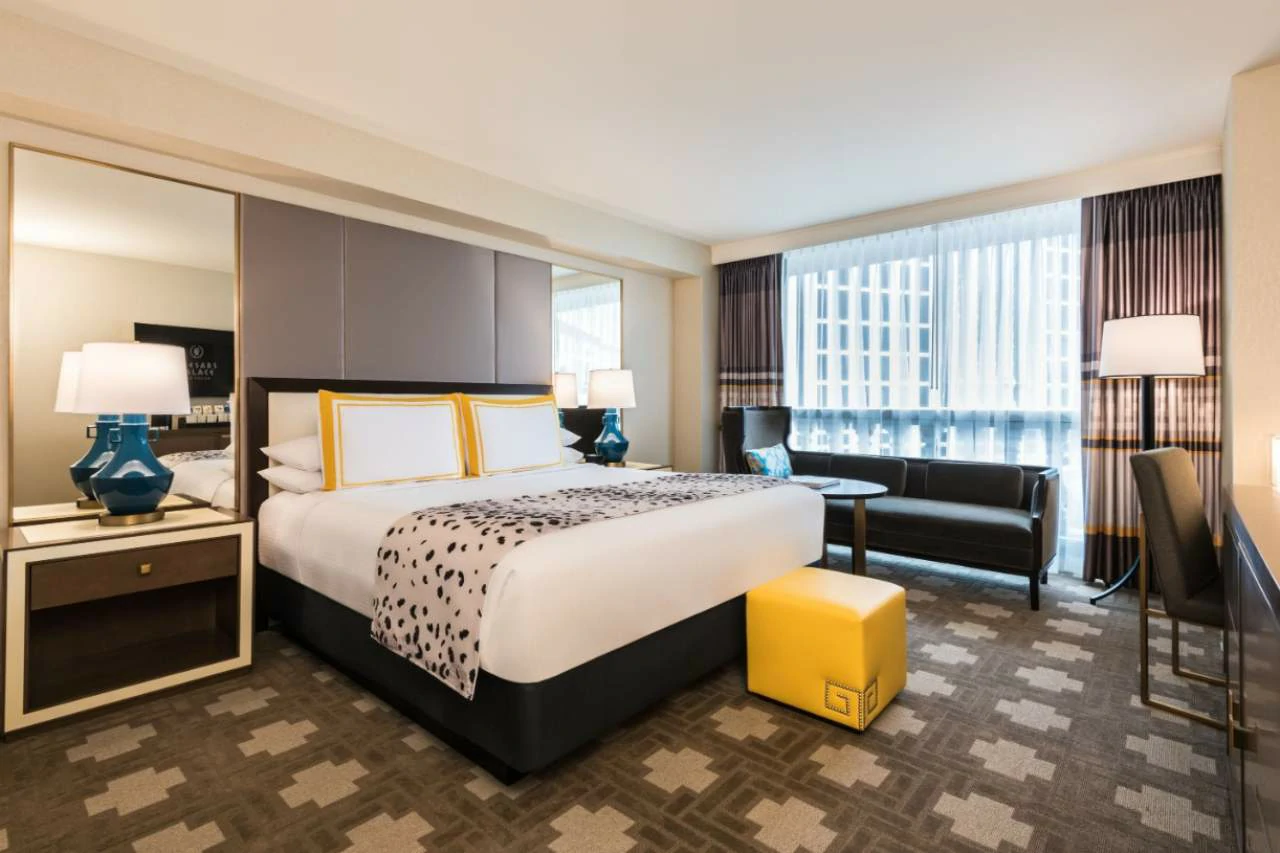
Selecting the right hotel bed size involves a thoughtful balance of practicality, comfort, and budget. Here’s a breakdown of the essential elements to keep in mind:
1. Number of Guests
Solo Travelers: For individuals, comfort is king (or queen!). Twins or twin XLs are fine for budget-minded travelers, but doubles, queens, or even kings offer a more luxurious experience.
Couples: Queens are a safe bet for most couples, while kings provide maximum space to stretch out. If you’re on a tighter budget, a double bed might suffice, especially for shorter stays.
Families: Family travel requires careful consideration. A standard room with two double beds can often accommodate two adults and two smaller children. Suites with multiple sleeping areas or hotels offering adjoining rooms might be necessary for larger families or those with older children.
2. Individual Size and Space Preferences
Consider Your Height: Taller individuals might feel cramped on shorter beds, making standard queens a better minimum, with California kings being ideal.
Sleeping Habits: Do you toss and turn or tend to sprawl out? If you need ample room to move freely during sleep, size up your bed choice accordingly.
Partners’ Needs: When traveling with a partner, be open to compromise. If one of you prefers a spacious bed while the other is fine with something smaller, opting for the middle ground (like a queen) ensures both parties get decent rest.
3. Room Size Limitations
Avoid Overcrowding: While a king-size bed might sound luxurious, cramming it into a tiny hotel room will leave you feeling cramped and uncomfortable. Be sure to factor in space for luggage, furniture, and comfortable movement around the room.
Ask the Hotel: If you’re unsure whether your desired bed size will comfortably fit the room, contact the hotel directly for clarification.
4. Budget Considerations
Expect to Pay More: Upgrading to larger beds typically comes with an increased price tag. Balance your desire for a spacious bed with your overall travel budget.
Prioritize Smartly: If a comfortable night’s sleep is your top priority, it might be worth splurging on a room with a larger bed. However, if you plan to spend minimal time in the room, a smaller bed might be sufficient, allowing you to allocate your budget elsewhere.
Expert Tip: Melissa Stevens, a travel blogger, advises: “If you’re unsure about bed size, err on the side of more space. It’s easier to adjust to a bed that feels too big than to endure a sleepless night on a bed that’s too small.”
Where to Find Bed Size Information

1. Hotel Websites
The Primary Source: A hotel’s official website is the most authoritative resource for bed size details. Look for these areas:
- Room Descriptions: Individual room pages should clearly specify the bed type(s) and dimensions for each room category (e.g., Standard Queen, Deluxe King, etc.).
- FAQs or Amenities Section: Some hotels might have a dedicated section listing general room features, including bed sizes.
- Images: While not foolproof, room photos can sometimes provide visual clues about the relative bed size.
2. Online Booking Platforms
Expedia, Booking.com, etc.: Major booking platforms like Expedia, Booking.com, or Hotels.com often list bed sizes within their room descriptions.
Filtering Options: Many booking sites allow you to filter search results based on desired bed type, making it easier to find rooms that meet your criteria.
Caveat: Accuracy on booking platforms can sometimes vary. It’s always advisable to double-check the information on the hotel’s own website for final confirmation.
3. Calling the Hotel Directly
The Most Direct Approach: If you cannot find the bed size details online or require very specific information (like exact dimensions of a particular room), don’t hesitate to call the hotel.
Ideal for Specific Needs: This method is especially helpful if you have mobility concerns, tall family members, or any unique room layout requirements that might necessitate a discussion with hotel staff.
Sarah Thompson Expert Opinion
Sarah Thompson, a travel journalist, emphasizes the importance of verifying bed information: “Don’t assume anything about hotel bed sizes based on room names alone. Terms like ‘deluxe’ or ‘superior’ don’t guarantee a specific bed type. Always do your research to avoid disappointment.”
Tips for a Comfortable Hotel Sleep
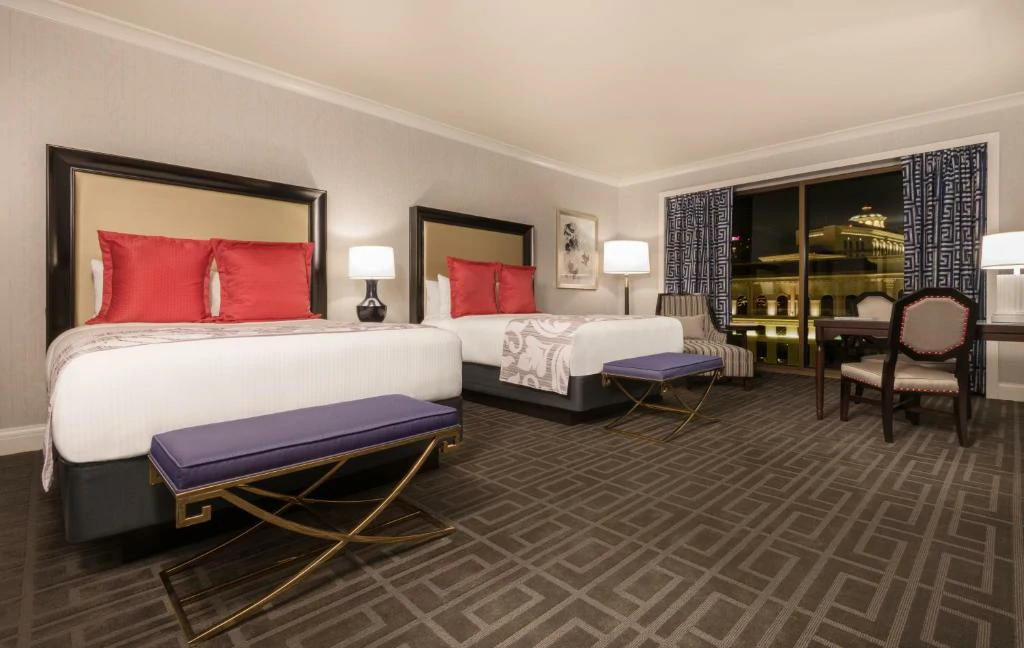
Sometimes, due to availability or budget, you might not secure a room with your perfect bed size. Don’t despair! Here are strategies to maximize your sleep comfort in any hotel setting:
1. Consider bringing your own pillow
Familiar Comfort: Your own pillow provides a sense of familiarity and personalized support, significantly contributing to sleep quality.
Packing Tip: If luggage space is limited, consider travel-sized pillows or compressible options that easily fit into your suitcase.
Allergies: Bringing your pillow is especially beneficial if you have sensitivities to specific pillow materials found in hotels.
2. Request a room away from noise
Peaceful Slumber: Noise disruptions are major enemies of a restful sleep. When booking or at check-in, request a room situated away from the following:
- Elevators and stairwells: Foot traffic and mechanical noises can be bothersome.
- Ice machines and vending areas: These tend to generate unexpected noise throughout the night.
- Street-facing rooms: Traffic and city sounds can be disruptive, especially for light sleepers.
Higher vs. Lower Floors: The impact of noise can vary based on hotel layout. If street noise is a major concern, a higher floor might be preferable. However, lower floors can sometimes offer better insulation from noisy events within the hotel (like a lobby bar or a ballroom).
3. Adjust the room temperature
Ideal Sleeping Conditions: Research suggests that a slightly cooler room temperature, between 65-68 degrees Fahrenheit (18-20 Celsius), is optimal for sleep.
Don’t Forget the Thermostat: Upon entering your room, take a moment to locate and adjust the thermostat accordingly.
Alternative Solutions: For limited temperature control, opening a window (if safe and possible) or using the room’s fan can help regulate airflow and coolness.
Dr. Michael Breus Expert Opinion
Dr. Michael Breus, a renowned sleep specialist known as “The Sleep Doctor“, explains: “Temperature regulation is crucial for falling asleep and staying asleep. A cooler environment signals to your body that it’s time for rest.”
Conclusion
Choosing the right hotel bed size is an essential element in guaranteeing a comfortable and enjoyable travel experience. Understanding the various standard sizes, considering your individual needs, and knowing where to find accurate information empowers you to make the best decision for your sleep preferences.
Remember, your sleep quality directly impacts your overall well-being and enjoyment of your trip. By prioritizing the right bed size and employing strategies to optimize your sleep environment, you set yourself up for a restful and rejuvenating hotel stay.
FAQs
Q: Can I request a larger bed size even if the room description lists a smaller one?
It’s always worth contacting the hotel directly to inquire about availability. While upgrades are not guaranteed, some hotels might be able to accommodate your request based on occupancy, especially if you’re willing to pay an additional fee.
Q: Are hotel beds the same size as standard home beds?
Generally, yes. Hotel beds typically use the same standard sizes (twin, double, queen, king) as home beds. However, slight variations in dimensions are possible, which is why it’s important to check the hotel’s specific measurements.
Q: What if I’m traveling with a group larger than a standard room can accommodate?
Many hotels offer options for larger groups:
- Adjoining Rooms: Requesting two or more rooms with connecting doors provides additional sleeping areas and privacy.
- Suites: Suites often feature multiple bedrooms or separate living spaces with sofa beds, accommodating more guests comfortably.
- Rollaway Beds: Some hotels offer rollaway beds (smaller, portable beds) for an additional fee, allowing you to add sleeping space to a standard room.
Q: Is it considered rude to ask the hotel a lot of questions about bed sizes?
Absolutely not! Hotels understand that sleep comfort is important to guests and are accustomed to answering these types of questions. Don’t hesitate to ask for clarification about bed sizes, room configurations, and anything else that will help you make an informed choice.
